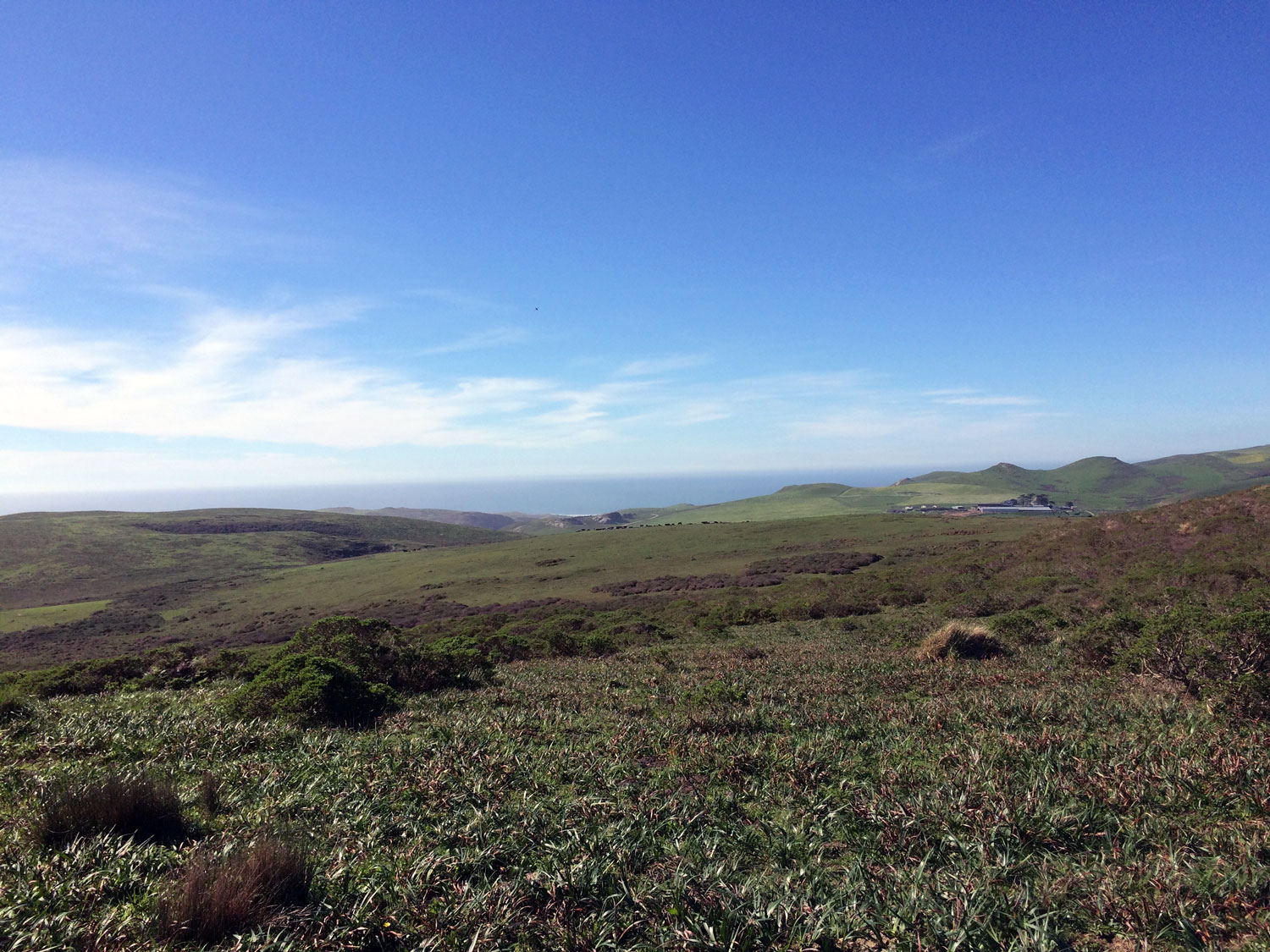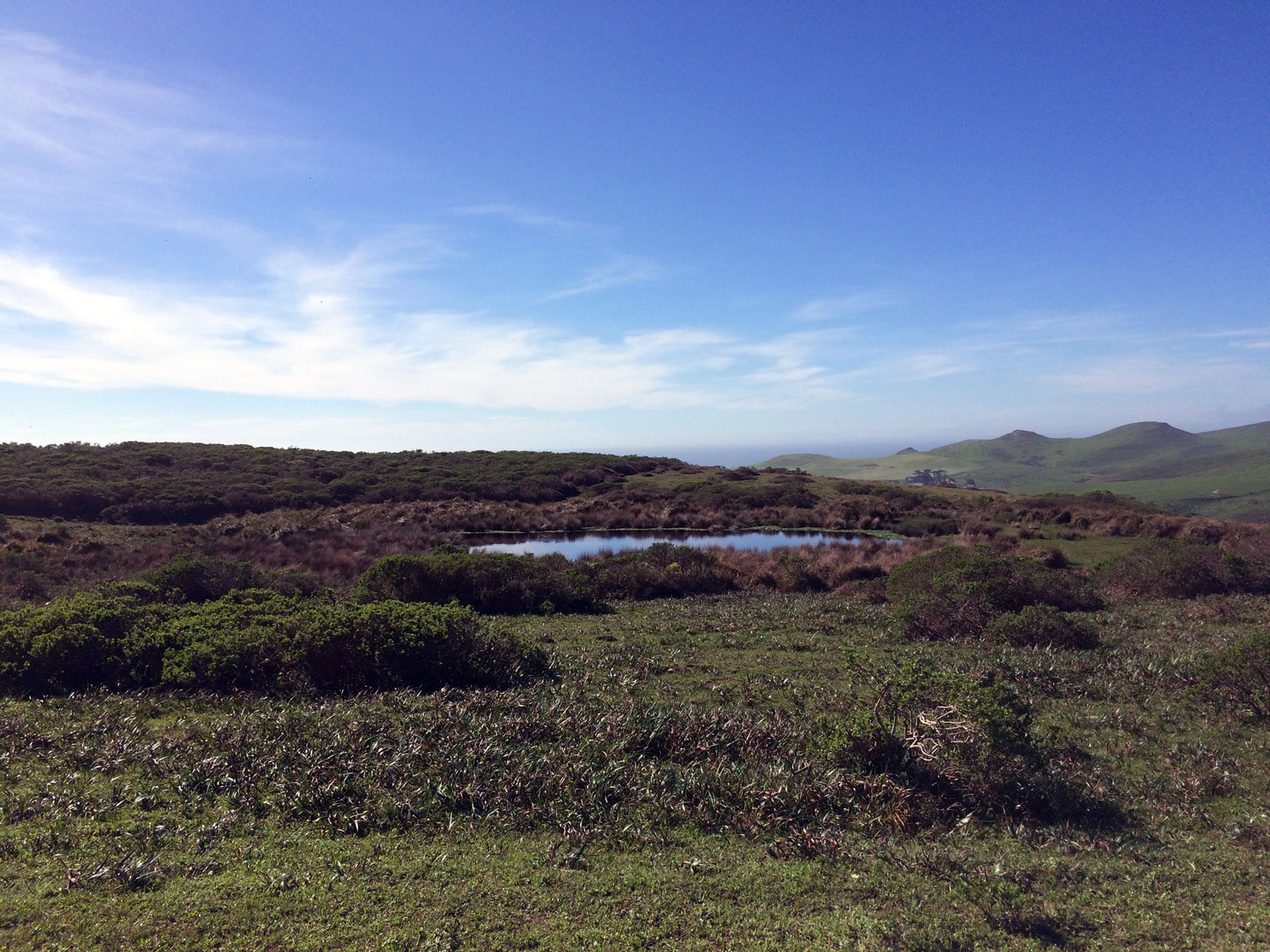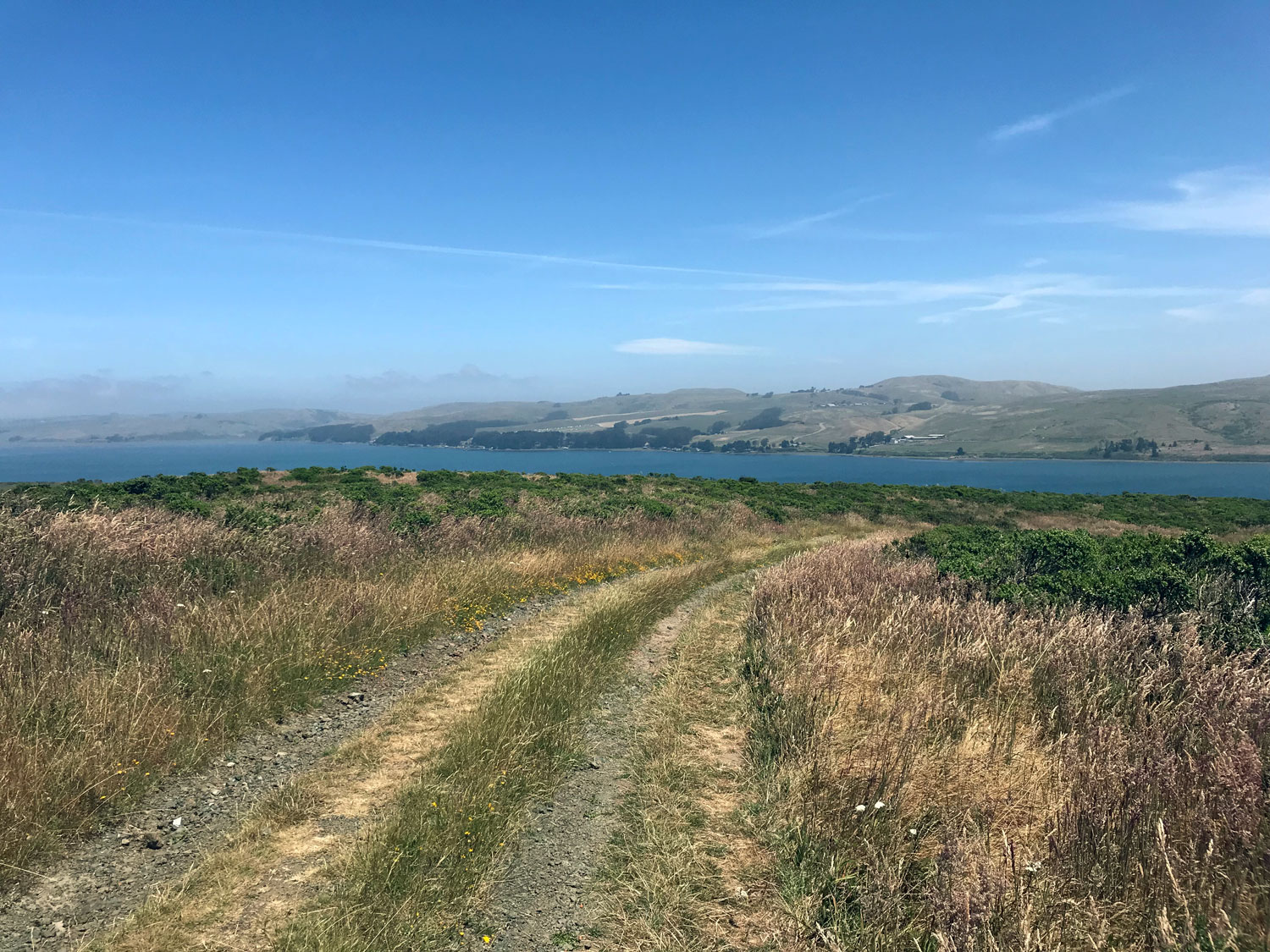Marshall Beach Trail
Trail length: 1.2 miles each way, out and back
Time: 30-45 minutes
Terrain: sloped, grasses
Restroom? Yes, vault toilets at the beach
Parking: Yes, small parking area
Biking: Yes, along L Ranch Road and the Marshall Beach Trail
Kid friendly: Yes, it’s an easy hike on a wide gravel road to a small beach
Plant list by the Marin chapter of the California Native Plant Society
Dates visited: 2/14/15, 6/24/19
Favorite plants on this trail: Daisies (They are invasive, but it’s hard to not like them. They look so cheerful and sincere with their bright heads tilting upwards.)
After a short drive on L Ranch Road passing through an active ranch with grazing cows, you arrive at the trailhead to Marshall Beach. It’s a pleasant walk to the beach with panoramic views of Tomales Bay. At the top of the trail, which is mostly flat, you can look to the left (West) and see the ocean — that is, when the fog isn’t too thick. The trail is fully exposed to the sun so bring a hat. Right before the beach, you pass through a brief shaded area with toilets on the right. The trail slopes downhill to the beach. The beach is a popular spot for kayakers to camp overnight and you’ll usually encounter a tent or two near the shore.
Loop: Marshall Beach & Lairds Landing
During a low tide, you can hike between Marshall Beach and Lairds Landing making a loop. Starting at the Marshall Beach Trailhead, hike to the right for Lairds Landing or straight ahead to Marshall Beach then walk carefully along the beach connecting the two locations and return on the other trail. Note: I have not personally done this loop. I met a couple at the trailhead who had just done it so I know it’s possible but I’m not sure how low the tide needs to be to accommodate walking between Marshall Beach and Laird’s Landing (0.1 miles).
Volunteer Opportunity: Habitat Restoration
Join the Habitat Restoration Program (HRP) at Point Reyes National Seashore to help protect and restore endangered plant and wildlife habitat at Abbotts Lagoon, the Lighthouse Bluffs, the Estero area, and other high-value habitat areas at Point Reyes National Seashore. Visit some of the most beautiful areas in the park and learn about local plant ecology while you work alongside park staff to carry out ecological restoration projects. Get involved, meet new people, and make a positive impact on your environment!























